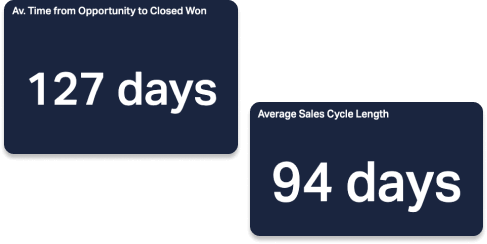The Average Sales Cycle Length is the mean length of time it takes your sales agents to successfully close deals with your leads. In the same way products have a life cycle, so too does the sales process.
The sales cycle consists of the following stages:
Finding leads
You can use methods such as the following to obtain leads:
- Ads
- Webinars
- Social media content
- Outbound prospecting
Responding to leads
This is where your Lead Response Time comes in. While it’s likely you’ll need to rank priorities, be sure to respond to all interested parties as soon as possible.
Qualifying leads
How suitable are your current leads to continue in the sales process? This is the time to evaluate potential clients’ suitability.
Presenting your product
Give an in-depth introduction to your product, and be prepared to respond to any questions or objections from your prospect that may arise.
Negotiation and closing
Once you and your lead have reached a mutually beneficial arrangement, you can sign the deal. It’s at this point that your “lead” becomes “customer.”
Maintaining the relationship
Maximizing your customers’ LTV (lifetime value) by keeping them happy is not only good for them, but for you – it allows your ARR, MRR, and other metrics to increase with time.
Average Sales Cycle Length is a relevant KPI for your sales team to monitor.


